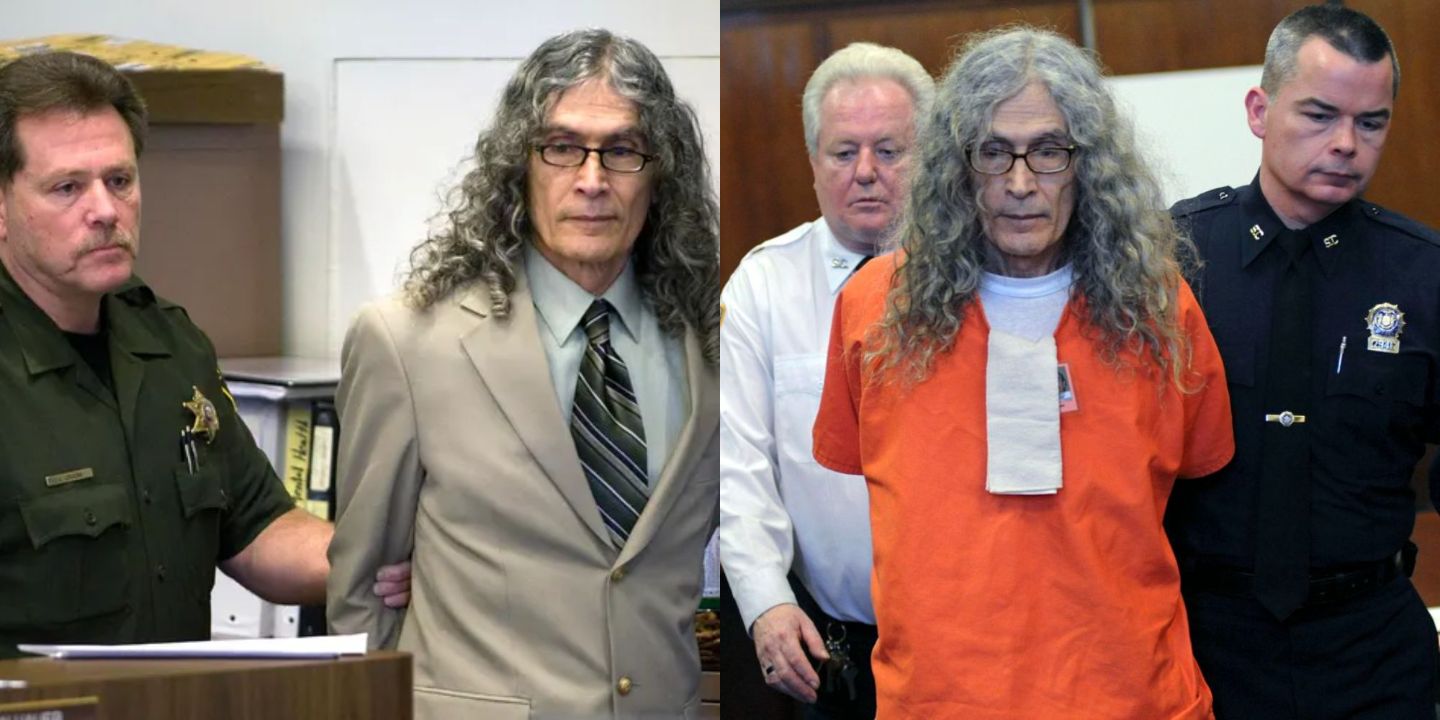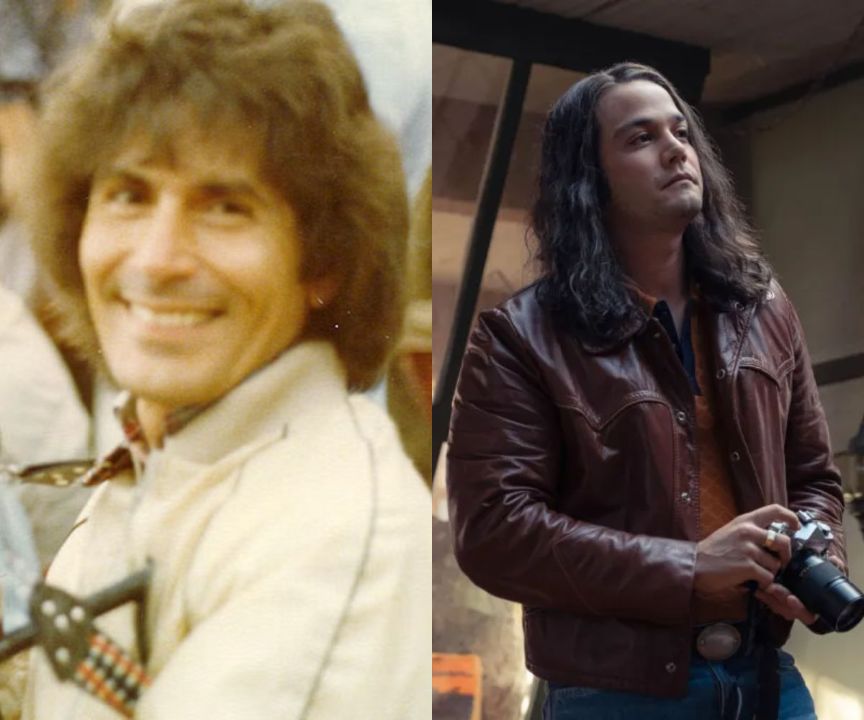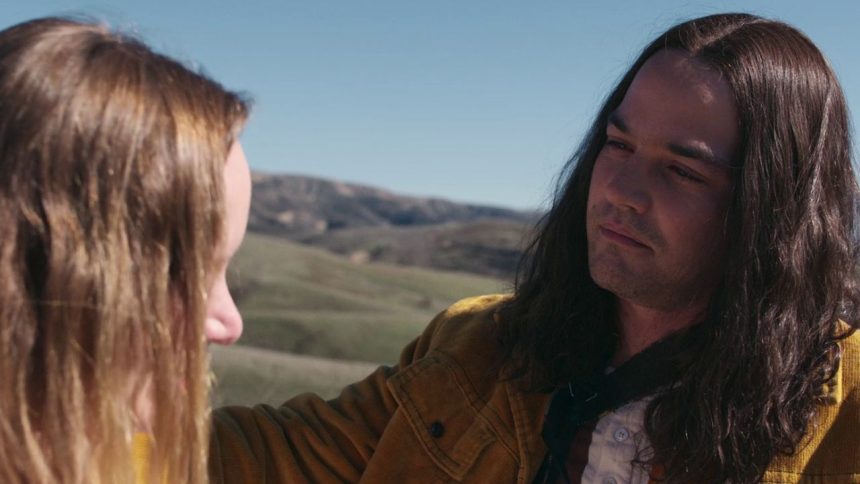Imagine a TV dating show, where a woman seeks her dream man through playful questions. But instead of finding her perfect match, she nearly invites a monster into her life—an event so surreal, it sounds like fiction, yet it’s chillingly real. We’re not talking about a comedy sketch; we’re unraveling how a serial killer, Rodney Alcala, slid onto prime-time television unnoticed.
The 2023 crime thriller ‘Woman of the Hour,’ revolving around the true story of Rodney Alcala (Daniel Zovatto), hit Netflix on October 18, 2024. With it, the curiosity surrounding this infamous killer has risen tenfold on the internet. Let’s dive into how the notorious Rodney Alcala, a man with a deadly double life, got his moment in the dating game spotlight. But first, we’ll address the trending query about how Rodney Alcala was finally caught, bringing his decades of terror to an end.
How Was Rodney Alcala Caught in Real Life?
Rodney Alcala, a serial killer who evaded permanent capture for years, was eventually brought to justice after decades of crimes. His actions spanned multiple states, and despite being caught several times, it took years for his full slate of atrocities to be revealed and legally addressed.
After killing Cornelia Crilley in New York in 1971, Alcala fled to New Hampshire under the alias John Berger. There, he found work as a counselor at a girls’ theater camp. His disguise didn’t last long. Two campers recognized him from a photo on the FBI’s Most Wanted list and reported it to their dean, who notified the authorities. Alcala was subsequently apprehended but served less than three years for his assault on Tali Shapiro.

Later, after Robin Samsoe’s abduction and murder in California, Alcala’s parole officer noticed a police sketch that bore a striking resemblance to him and alerted investigators. In July 1979, he was arrested for Samsoe’s murder.
During the investigation, police uncovered more damning evidence in a storage locker he had rented. The locker contained a pair of earrings belonging to Samsoe’s mother and several photo albums filled with disturbing images of boys, girls, and women.
Alcala first stood trial for Samsoe’s murder in February 1980. He was convicted and sentenced to death. However, his conviction was overturned in 1984, when the California Supreme Court ruled that the trial was unfair because the jury had been informed of Alcala’s previous sexual crimes. A second trial in 1986 resulted in another conviction and death sentence, but that too was overturned in 2003.
By this point, advances in DNA technology allowed investigators to link Alcala to four additional murders between 1977 and 1979: those of Jill Barcomb (18), Jill Parenteau (21), Georgia Wixted (27), and Charlotte Lamb (32). Prosecutors in Orange County charged Alcala with five murders, including Samsoe’s. In 2010, he was sentenced to death for each of these killings.

Alcala’s crimes didn’t end there. In 2012, DNA evidence tied him to the murders of Cornelia Crilley and Ellen Hover, leading to a sentence of 25 years to life. Then, in 2016, he was charged with the murder of Christine Thornton in Wyoming, though he was never extradited due to his existing death sentence.
Rodney Alcala’s eventual capture and prosecution closed many cold cases, though the horror of his spree lingered long after his final conviction. One of his teenage victims, Monique Hoyt, who luckily managed to escape as a 15-year-old in 1979 is still shaken to this day!
Rodney Alcala’s Disturbing Double Life: Artist by Day, Monster by Night
Rodney Alcala’s story begins like many others—he was born in San Antonio, Texas, on August 23, 1943, and grew up in Los Angeles as a promising student. However, the brilliance of his youth hid something much darker beneath the surface. At 17, he joined the U.S. Army, but his disturbing behavior began to surface during his service. His military record shows a trail of manipulation, vindictiveness, and assaults on women. In 1964, he deserted the Army during a breakdown and was diagnosed with antisocial personality disorder. Once free of his uniform, he graduated from UCLA, giving no hint of the menace he’d become.
The true nightmare began in September 1968. Alcala was spotted luring eight-year-old Tali Shapiro into his apartment, where he viciously beat her with a steel bar. Fortunately, the police intervened just in time to save Tali, though she remained in a coma for over a month. But Alcala? He vanished, slipping across the country and enrolling at NYU under the alias John Berger, as if trying to escape the wreckage he left behind.

In a twist of irony, Alcala studied film under Roman Polanski, a man who would later flee his own charges of sexual misconduct. By 1971, Alcala had gotten a job at Blue Cross Blue Shield, sharing office space with another future serial killer, Richard Cottingham, aka the Times Square Ripper. Their co-workers likely had no idea they were working alongside two men who would go on to commit horrendous acts of violence. Alcala’s spiral into murder began that same year when he strangled flight attendant Cornelia Crilley in her Manhattan apartment, though it would be decades before the crime was linked to him.
Despite his past crimes, Rodney Alcala managed to land on the FBI’s Most Wanted list thanks to his attack on Tali Shapiro. Two kids spotted him, leading to his arrest and extradition back to California. Yet, legal loopholes worked in his favor—Tali’s mother refused to let her testify, and Alcala only served a brief sentence on lesser charges. After his release, he wasted no time slipping back into violence, assaulting a 13-year-old girl and, shockingly, being paroled again within just two years.

What’s most astonishing is how the system allowed him to wreak havoc unchecked. By 1977, Alcala returned to New York, where he allegedly murdered Ellen Jane Hover, the goddaughter of entertainment legends Dean Martin and Sammy Davis Jr. But again, he evaded justice. After a brief stop back in Los Angeles in 1978, Alcala took on a new guise: fashion photographer. Using this fake profession, he tricked hundreds into posing for him—some of them never made it out of his grasp.
In September 1978, Rodney Alcala took center stage on ‘The Dating Game.’ With his sinister past hidden from view, he charmed his way through innuendo-laden questions, catching the attention of Cheryl Bradshaw, the bachelorette of the night. When asked what kind of food he would be, Alcala responded with, “I’m called the banana, and I look really good. Peel me.” Cheryl laughed. But beneath his playful exterior lay a man who had already taken multiple lives.

Though Cheryl picked Alcala, she quickly sensed something was off. After meeting him face-to-face, she backed out of the date. Her instincts likely saved her life, as Alcala’s killing spree would escalate following his brief TV fame. Throughout the next year, he murdered several women, including a 12-year-old girl named Robin Samsoe. His trail of terror finally caught up to him in 1979 when he was arrested once more.
Alcala’s saga didn’t end there. His convictions were overturned twice, and it wasn’t until 2010 that he faced trial for five murders, representing himself in court in a bizarre performance. He pretended to play both prosecutor and witness, questioning himself in a deep voice while referring to himself in the third person. Yet, even his twisted courtroom theatrics couldn’t save him. He was convicted and sentenced to death, though he would live for over a decade more, finally dying behind bars in 2021.



